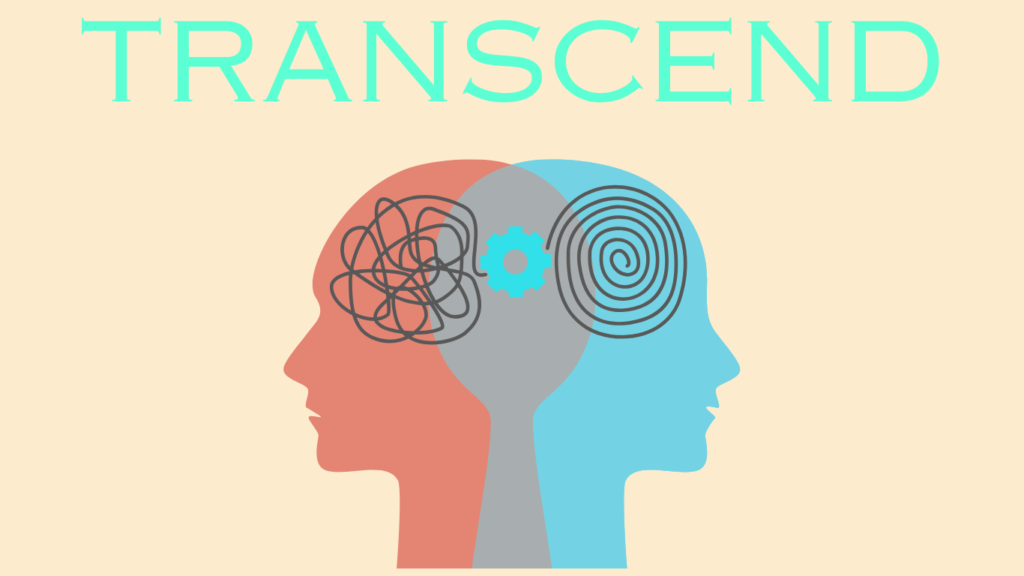The Power of Transcendental Meditation: A Path to Inner Peace and Mental Clarity

In our fast-paced, stress-filled world, many are turning to mindfulness and meditation practices to find solace and tranquility. Among these practices, Transcendental Meditation (TM) has gained widespread popularity for its simplicity, effectiveness, and scientifically backed benefits. This blog delves into what makes TM unique, how it works, and why it might just be the key to unlocking a more harmonious life.
Table of Contents
What is Transcendental Meditation?
Transcendental Meditation is a technique rooted in ancient traditions, popularized in the modern era by Maharishi Mahesh Yogi. Unlike other meditation styles that require intense focus or control of thoughts, TM is effortless.
Practitioners silently repeat transcendental meditation mantras—a sound or word devoid of meaning, often derived from Sanskrit—to transcend ordinary thought and experience a deep state of restful awareness.
The simplicity of TM makes it accessible to people of all backgrounds. Sessions typically last 20 minutes and are practiced twice daily, sitting comfortably with eyes closed.
The Science Behind Transcendental Meditation Technique
TM isn’t just a spiritual pursuit; it’s grounded in decades of scientific research. Studies reveal that the practice significantly reduces stress and anxiety, lowers blood pressure, and enhances brain function.
The technique promotes a state of restful alertness, which differs from regular relaxation. During TM, the body achieves deep rest while the mind becomes more alert and focused.
TM aims to achieve a state of ‘transcendental consciousness’, which is a unique state of awareness beyond waking, dreaming, and sleeping.
Some highlights from TM research include:
- Stress Reduction: TM helps decrease cortisol levels, the stress hormone, and activates the parasympathetic nervous system, inducing a calm state.
- Improved Heart Health: Regular practice has been linked to reduced hypertension and better cardiovascular health.
- Enhanced Cognitive Function: Studies suggest improvements in memory, creativity, and problem-solving skills.
- Emotional Resilience: TM practitioners report higher levels of happiness, emotional stability, and self-awareness.
The Transcendental Meditation Technique
The Transcendental Meditation (TM) technique is a simple, effortless, and evidence-based meditation practice that has been widely practiced and researched for over 50 years. Developed by Maharishi Mahesh Yogi, the TM technique is designed to help individuals experience a deeper state of consciousness and promote overall well-being.
Unlike other meditation practices that may require intense concentration or mindfulness, the TM technique involves silently repeating a personalized mantra, allowing the mind to settle inward and access a state of pure consciousness. This effortless process makes the TM technique accessible to people of all ages and backgrounds, providing a practical tool for achieving inner peace and clarity.
How Does TM Differ from Other Meditation Practices?
While mindfulness meditation often involves observing thoughts or focusing on breathing, TM uses its mantra to gently guide the mind inward. This process bypasses the surface level of consciousness, leading to a state of restful alertness without effort or concentration.
Key differentiators include:
- Ease of Practice: TM requires no prior experience or focus techniques.
- Mantra-Based Approach: Unlike visual or breath-based meditation, TM centers on a mantra tailored to the individual.
- Non-Religious: TM is secular and universal, making it appealing to people of all faiths or none.
How to Start Practicing TM
Learning TM involves personalized instruction from a certified teacher. The Transcendental Meditation program involves multiple sessions and is structured to ensure proper understanding and application.
The technique is typically taught over four days in a structured course, ensuring proper understanding and application. While this approach may involve a financial investment, many find the lifelong benefits far outweigh the initial cost.
The TM course fee is income-based and available in installments, making the Transcendental Meditation technique accessible to everyone. Additionally, there are scholarships available for specific groups like first responders and veterans, highlighting the commitment to financial assistance.
How to Learn the TM Technique
To learn the TM technique, you’ll need to find a certified teacher who has undergone extensive training in the TM method. The learning process typically involves a series of sessions, including a one-hour lecture, one hour of formal one-on-one training, and three follow-up sessions to ensure you’re practicing the technique correctly.
During these sessions, your certified teacher will provide you with a personalized mantra and guide you through the meditation practice. This structured approach ensures that you fully understand the TM technique and can experience its benefits from the very beginning.
Choosing a Transcendental Meditation Mantra
A Transcendental Meditation mantra is a word or sound that is used to help your mind access a deeper state of consciousness. The mantra is chosen by your certified teacher and is based on your individual needs and characteristics.
It’s essential to choose a mantra that is meaningless and doesn’t trigger any thoughts or emotions, allowing you to focus on the meditation practice. This personalized approach ensures that the mantra effectively guides your mind inward, facilitating a state of restful alertness and pure consciousness.
Cost and Investment
The cost of learning the TM technique varies depending on your household income, ranging from $420 to $980. Grants are available for low-income households receiving federal assistance.
While the cost may seem significant, the benefits of regular TM practice can be substantial, including reduced stress, improved mental clarity, and enhanced overall well-being. Many practitioners find that the investment in learning the TM technique pays off in the form of long-term health benefits and a greater sense of inner peace.
Tips for Effective Practice
To get the most out of your TM practice, here are some tips to keep in mind:
- Find a quiet and comfortable space: Identify a quiet, comfortable, and distraction-free space where you can practice TM without interruptions.
- Establish a regular routine: Aim to practice TM at the same time every day, ideally in the morning and evening, to establish a consistent routine.
- Use your mantra correctly: Remember to use your personalized mantra correctly, repeating it silently to yourself during your meditation practice.
- Don’t worry about thoughts: It’s normal for thoughts to arise during meditation. Simply acknowledge them and gently return to your mantra.
- Be patient and consistent: Regular TM practice takes time and effort to develop. Be patient and consistent, and you’ll start to experience the benefits of TM.
By following these tips and committing to regular TM practice, you can experience the many benefits of this powerful meditation technique. Whether you’re seeking to reduce stress, improve mental clarity, or enhance your overall well-being, the TM technique offers a simple and effective way to achieve your goals.
Health Benefits Beyond the Individual
The ripple effects of TM extend beyond personal well-being. Practitioners often notice improvements in their relationships, work performance, and decision-making. The David Lynch Foundation promotes TM as a powerful technique for stress reduction and overall health, highlighting its positive impact on individuals and communities.
Some studies even suggest that communities with higher numbers of TM practitioners experience reduced crime rates and increased social harmony—a phenomenon known as the Maharishi Effect.
Final Thoughts
In a world where stress and distractions dominate, Transcendental Meditation offers a beacon of calm and clarity. Its simplicity, accessibility, and proven benefits make it a valuable tool for anyone seeking inner peace and personal growth.
If you’re curious, consider exploring a TM course to experience its transformative potential firsthand. After all, finding 20 minutes twice a day to nurture your well-being could be one of the most impactful decisions you make.

